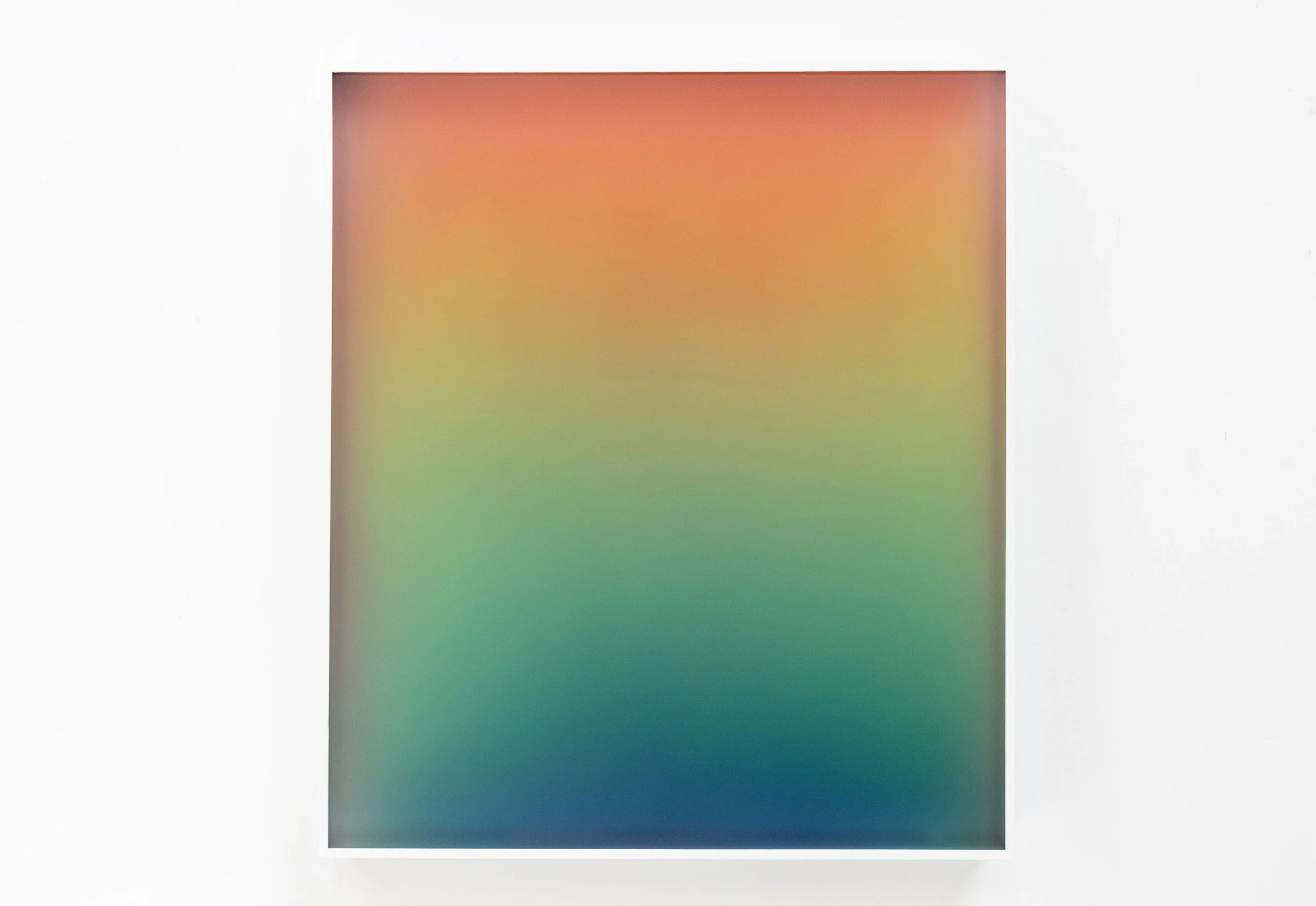Co-existence, 70 x 80cm. 2025.
Daniel O’Toole
Multimedia artist
Naarm (Melbourne, Australia)
I make paintings and installations that explore how colour, light, and sound shape the way we experience space. My work often begins with playful experimentation, working with materials and observing how light behaves. I use photography and video to capture natural phenomena, gathering perceptual moments that later return in my studio process. I’m interested in the sense of awe that comes from not fully understanding what you’re seeing, like watching a rainbow appear and feeling caught somewhere between science and the inexplicable. Much of my work grows from that space, aiming to share the wonder and heightened attention these moments create.
Painting remains at the core of my practice, and my early background in figuration continues to guide my sense of colour and composition. Although colour often appears central, I use it as a way to explore the behaviour of light. Across media, I try to create calm, sensory environments that invite people to slow down, look closely, and feel more present.
